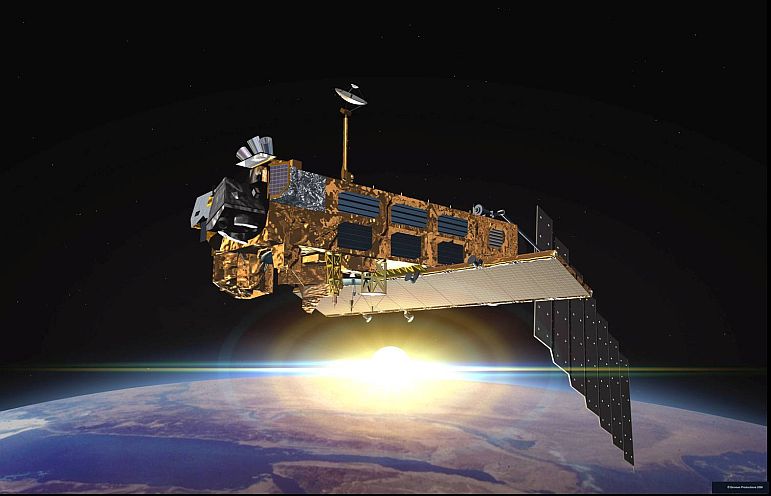| Satellites for weather and climate monitoring
The Swiss national weather service has been using satellite technology to generate weather forecasts since data became available in the early 60’s. The “Meteosat” series of satellites, first launched in 1977 deliver extremely good images in comparison with their predecessors. These images are taken not only at the visible wavelengths but also in the infra-red range of the spectrum, as Hans-Peter Roesli of MeteoSchweiz reported at the Science Apèro. An important factor affecting weather development is the water vapor which envelops the Earth, and which satellites have made “visible”. The Meteosat satellite currently in operation is the seventh of the first generation, and it transmits an image to the ground station every 30 minutes. In 2005 it will be replaced by a satellite of the second generation, which transmit a still-better quality image every 15 minutes. Today, meteorologists have about ten times more data available for use in making forecasts than in 1977. This data is not only used for short-term forecasts but also for wind measurements, which are important for medium term forecasting. In addition, Meteosat data is also used for global weather observations and as a part of the fundamental input from which well-founded statements on climate change can be derived.
However, according to Roesli, data from ground stations, in addition to that from satellites, is still essential for spot-on weather forecasts and this will remain so in future too. | 



